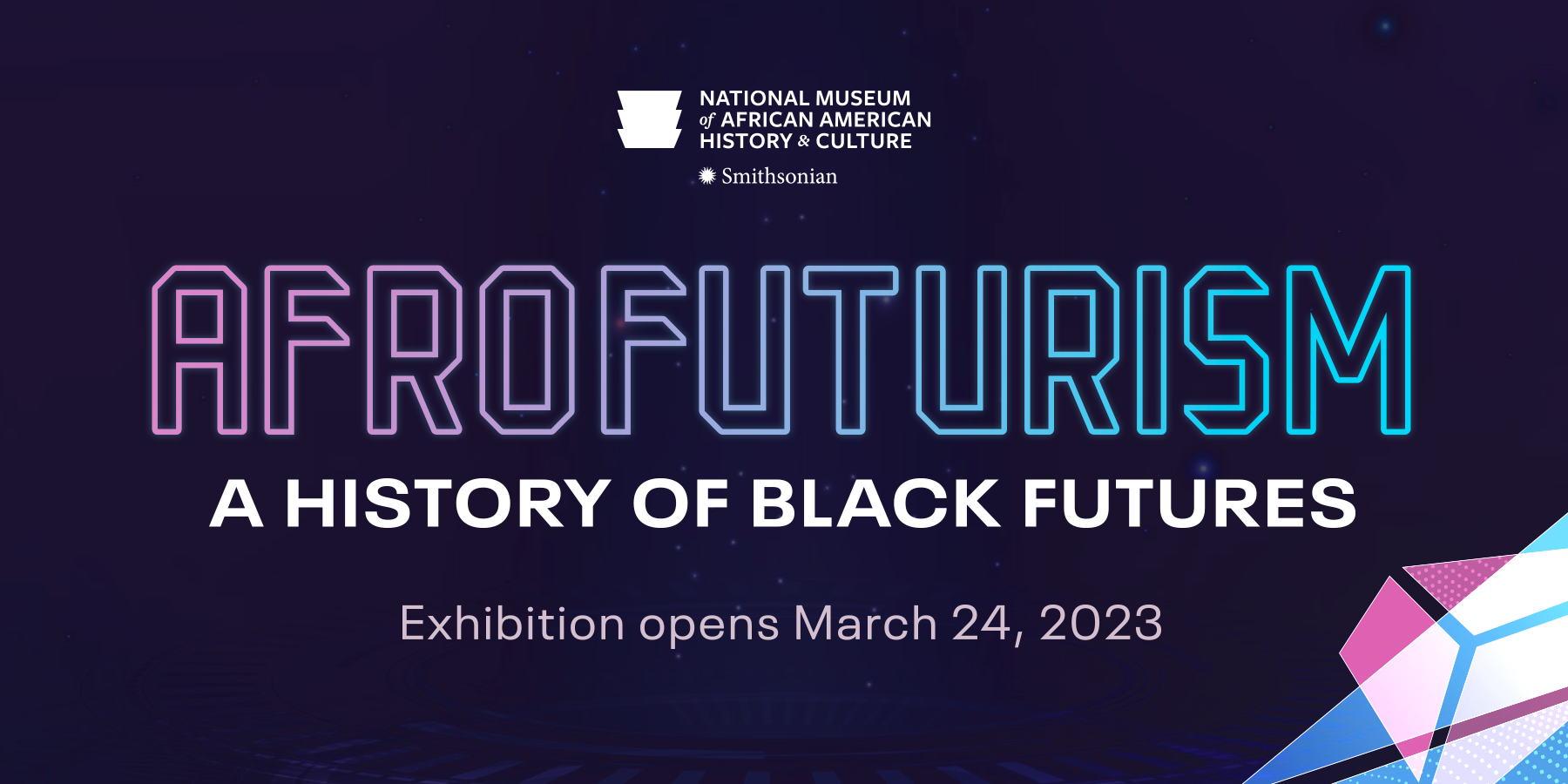Objects From OutKast, Octavia Butler and Marvel’s “Black Panther” on Display in National Museum of African American History and Culture’s New “Afrofuturism” Exhibition
“Afrofuturism: A History of Black Futures” opens Friday, March 24, at the Smithsonian’s National Museum of African American History and Culture. On view until March 24, 2024, the exhibition explores and reveals Afrofuturism’s historic and poignant engagement with African American history and popular culture.
“To think on Afrofuturism is to consider what the National Museum of African American History and Culture has long been dedicated to—that is, the bright future that Black people imagined and brought into being while confronting a perilous present,” said Kevin Young, the Andrew W. Mellon Director of the National Museum of African American History and Culture. “Afrofuturism has also long been a mix of celebration and resistance, musicality and theatricality, achievement and survival. Much of this mix-making and myth-making was through music, from the Negro spirituals down to jazz and gospel, funk and hip-hop.”
Coined in 1993 by culture critic Mark Dery, Afrofuturism is an evolving concept expressed through a Black cultural lens that reimagines, reinterprets and reclaims the past and present for a more empowering future for African Americans. Using more than 100 objects from music, film, television, comic books, fashion, theater, literature and more, this exhibition covers more than a century of Afrofuturism’s rich history of expression and investigates its impact and broad influence on American culture.
This exhibition will explore Afrofuturism’s history and influence in three sections within the gallery. In the exhibition’s first section, “The History of Black Futures,” visitors can view how the enslaved looked to the cosmos to envision and plot their freedom. The second section, “New Black Futures,” explores Afrofuturism of the modern era, introducing visitors to the dynamic set of ideas, practices, criticisms and widespread cultural production related to Afrofuturism in the 20th century, leading into the present. Visitors will be able to experience how Black Americans navigated technological advances and used art, literature, music and film to confront racism and provide an identity for Black creatives and intellectuals envisioning new futures for African Americans outside the realities of racism and segregated life. The exhibition concludes with “Infinite Possibilities,” highlighting Afrofuturism’s connection to notions of space and liberation, technology, digital activism, 21st-century popular media and the future. In this section, visitors will view how Black Americans have used comics and animation, music, film and digital technology to create liberated worlds and landscapes.
“This exhibition is a way to look at how Afrofuturism has been practiced throughout history and across the diaspora, and the ways it is expressed, historically and in the present, through art, literature and activism,” said curator Kevin Strait. “We hope that visitors learn more about this topic by seeing the various ways that Afrofuturism connects with and influences our popular culture and gain a broader understanding of Afrofuturism, not simply as a subgenre of science fiction and fantasy, but as part of a larger tradition of Black intellectual history.”
Among the exhibition highlights:
- Octavia Butler’s typewriter
- Vernon Reid’s guitar
- Cape and jumpsuit worn by André De Shields from The Wiz on Broadway
- Trayvon Martin’s flight suit from Experience Aviation
- Red Starfleet uniform worn by Nichelle Nichols as Lt. Nyota Uhura on Star Trek
- Black Panther costume worn by Chadwick Boseman
- George Clinton’s wig from Parliament-Funkadelic
Located inside the museum’s Bank of America Special Exhibitions Gallery, “Afrofuturism: A History of Black Futures” fills more than 4,000 square feet of space with interactives, artwork and rarely seen artifacts that examines the history of Afrofuturism and how African Americans view themselves within American history, popular media and culture.
About the National Museum of African American History and Culture
Since opening Sept. 24, 2016, the National Museum of African American History and Culture has welcomed more than 8.5 million in-person visitors and millions more through its digital presence. Occupying a prominent location next to the Washington Monument on the National Mall in Washington, D.C., the nearly 400,000-square-foot museum is the nation’s largest and most comprehensive cultural destination devoted exclusively to exploring, documenting and showcasing the African American story and its impact on American and world history. For more information about the museum, visit nmaahc.si.edu follow @NMAAHC on Twitter, Facebook and Instagram or call Smithsonian information at (202) 633-1000.
# # #
SI-72A-2023

